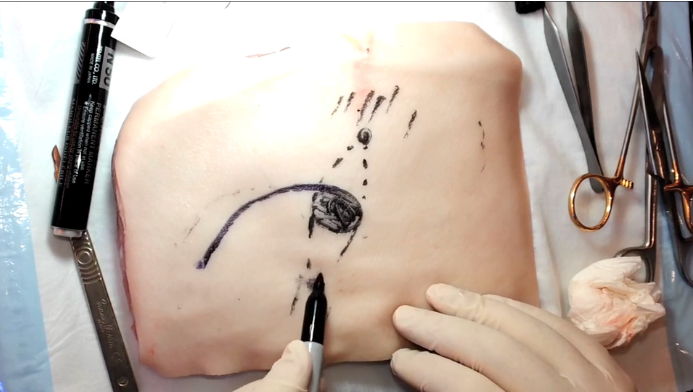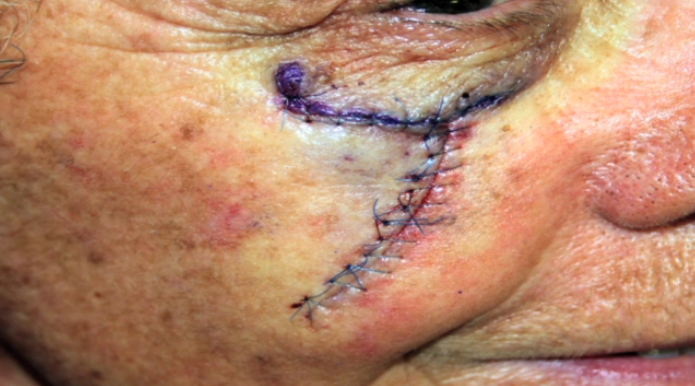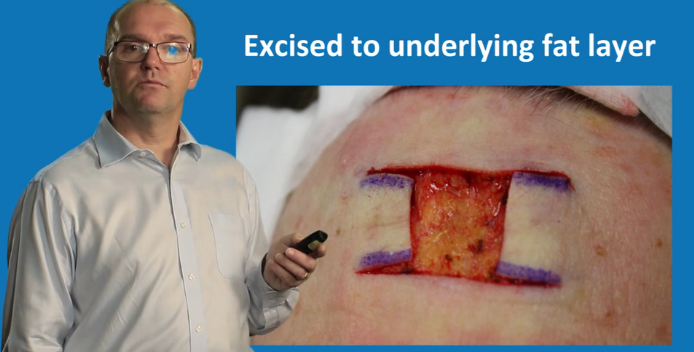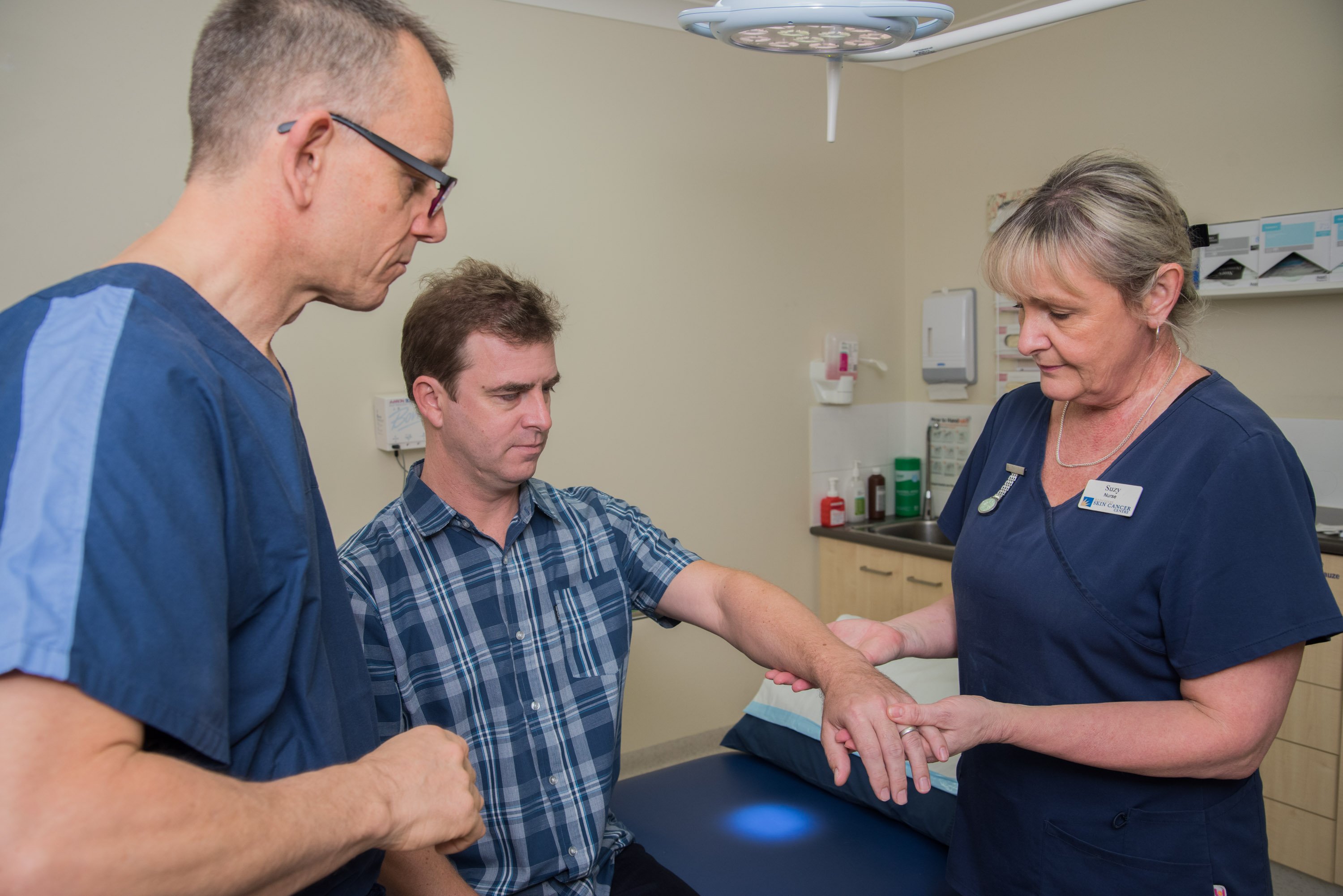Pivotal flaps can be a preferable excision method for lesions which can't be excised using an ellipse. However this method requires a great degree of planning as considerable tension may be present and extensive undermining needed to close the excision without tension.
In the short video below (Part I), surgical lecturer Tony Dicker demonstrates how to plan and perform a pivotal flap with optimal outcomes. This is a video sample from the Professional Certificate of Skin Cancer Surgery.
The certificate course includes theory and surgical practical sessions on:
- Elliptical excisions
- Rotation flaps
- Advancement flaps
- Full thickness grafts
- Dog ear repairs
- Advanced suturing
Surgery is still considered the most effective and definitive skin cancer treatment. The Professional Certificate of Skin Cancer Surgery is ideal for acquiring and honing various surgical techniques. In a highly practical program, you will learn how to perform large elliptical excisions and different types of flaps and grafts which will allow you to manage more complex skin cancer cases in your practice. This course is the first part of the three-part Professional Diploma of Skin Cancer Surgery.


 1800 867 1390
1800 867 1390

